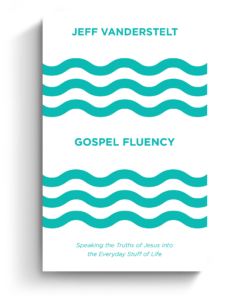Send your theological, biblical, and practical ministry questions to [email protected] along with your full name, city, and state. We’ll pass them along to The Gospel Coalition’s Council members and other friends for an answer we can share.
Alex B. from Lynchburg, Virginia, asks:
The tradition of the Western church has been that Jesus had a sinless human nature. I have held this position without ever thinking twice about it. But recently I’ve read T. F. Torrance, where he asks, “If our sin nature condemns us a believers, and Jesus did not have a sin nature, then how is the payment for my sin nature covered at the cross?” I have also come across scriptures like Hebrews 2:17 that says he is like us in “every respect” and James 2:14-15, which teaches that if Jesus was “tempted like we are” then the sin had to be alluring to some part of his being. So what is the nature of Jesus’ nature?
We posed the question to Luke Stamps, assistant professor of Christian studies at California Baptist University in the online and professional studies division.
This question is highly relevant for a couple of reasons. First, it represents a pressing concern for any Christian who wants to affirm the genuine humanity of Jesus Christ. If Christ was not “made like his brothers in every respect,” then how can he serve as our merciful and faithful high priest (Heb. 2:17)? So the question is, was it necessary for him to assume a fallen human nature in order to redeem those with fallen human natures?
Second, this question is a live issue among contemporary theologians. Following in the steps of 20th-century theological giants Karl Barth and T. F. Torrance, some contemporary scholars maintain that, in the incarnation, the Son of God took to himself a human nature that was fallen but not sinful. This assumption of our concrete, fallen existence was necessary for Christ’s redeeming work. Barth’s argument is typical of this approach:
There must be no weakening or obscuring of the saving truth that the nature which God assumed in Christ is identical with our nature as we see it in the light of Fall. If it were otherwise, how could Christ be really like us? What concern would we have with him? We stand before God characterized by the Fall. God’s Son not only assumed our nature but he entered the concrete form of our nature, under which we stand before God as men damned and lost. (Church Dogmatics I.2, p. 153)
However, in assuming a fallen human nature, the Son of God did not thereby commit sin, nor did he ever act in a sinful way through his fallen nature. Instead, his life of sinless obedience in and through a fallen human nature is precisely the means by which fallen humanity is both judged and reconciled to God. As Torrance argues,
His taking of our flesh of sin was a sinless action, which means that Jesus does not do in the flesh of sin what we do, namely, sin, but it also means that by remaining holy and sinless in our flesh, he condemned sin in the flesh he assumed and judged it by his very sinlessness. (Incarnation, p. 63)
So it seems that there are two complementary motivations for the fallen-human-nature (FHN) view. First, proponents of this view believe it to be necessary for a meaningful incarnation. As Barth argued, how could Christ really be like us except he assume, not some abstract human condition, but the concrete (and therefore fallen) condition in which we find ourselves? Second and closely related, proponents of the FHN view espouse this position because they believe that it is a necessary prerequisite for Christ’s reconciling work. The logic is similar to that of Gregory of Nazianzus in his argument against the ancient Apollinarian heresy: “That which is unassumed is unhealed.” In other words, if there is a part of our human nature that is not assumed by the Son in his incarnation, then that part of our natures cannot be healed by his saving work.
What to Make?
So what should we make of this FHN position? There is much to commend here, at least in terms of the position’s motivation. Certainly, all Orthodox Christians want to maintain the real and meaningful incarnation of the Son of God. He was indeed “made like his brothers in every respect.” He assumed a concrete human nature—body and soul—so that we might have a genuine “concern” with him, to echo Barth. Likewise, we also want to affirm that the divine Son assumed all that it means to be human so that he might heal and redeem all of our nature—body and soul. Gregory’s maxim holds true: if Christ only assumed, say, a human body, then our fallen human souls would be left to perish.
Nevertheless, there are several significant problems with the FHN view.
First, it tends to neglect the fact that fallenness is not intrinsic to humanity. Fallenness is a not a “part” of humanity that must be healed. It is a condition of moral corruption and a propensity toward sin. All that is required for the Son’s genuine incarnation and his representative work on our behalf is the assumption of a full human nature (body and soul), not a fallen human nature. Adam was fully human prior to his fall into sin. And Christ is fully human even though he does not possess the corruption of other human beings.
Second, the FHN view assumes that one can be in a state of fallenness and not be sinful. But this assumption is far from self-evident. Indeed, the mainstream Reformed understanding of original sin argues precisely the opposite: to possess a fallen nature is to be guilty before God. Indeed, humanity’s guilt in Adam is logically prior to the corruption they inherit from him. In other words, no one possesses a fallen human nature who is not also guilty before God. Even if we could conceive of a scenario in which someone could be fallen but not guilty, it is difficult to see how even this state of fallenness is not morally repugnant to God. Presumably “fallenness” in this context means possessing a propensity toward sin, even if no actual sin is committed. But how could a human being in this state not be condemnable in the eyes of a holy God? (For more along these lines, see Oliver Crisp’s excellent essay on this topic in Divinity and Humanity, chapter 4.)
Third, the FHN would seem to pose serious challenges to the historic understanding of the person of Christ. According to the “Definition” issued at the Council of Chalcedon, there are two distinct but inseparable natures (divine and human) hypostatically (that is, personally) united in the one person of the Son. But how could the infallible Son of God be joined to a morally fallen human nature? Would this not call into question the divine Son’s impeccability, that is, his inability to commit sin? Or would one need to posit two persons in Christ, and hence the heresy of Nestorianism, in order to preserve both the impeccability of the Son and the fallenness of Jesus Christ? These Christological conundrums can be avoided if we also avoid the FHN view (again, see Crisp’s essay for more reflections in this vein).
Finally, the FHN view seems to ignore the fact that we can affirm what might be called the fallen experience of Jesus without positing a fallen nature in him. To put it another way, Christ experienced the effects of the Fall even though his nature was not complicit in it. We are not to imagine that Christ blissfully waltzed through life untrammeled by the suffering, sorrows, and pains of fallen human experience. The Gospels present Jesus as one who was hungry, tired, thirsty, grief-stricken, and even morally tempted and vulnerable to conflicting desires (besides his wilderness temptations, we might also think of his struggle in Gethsemane).
But none of this requires his assumption of a fallen nature. No, Christ is in possession of an unfallen human nature, but during his state of humiliation, he lived and moved and had his being in a fallen world. So even the incarnate God was not immune from the horrors of fallen existence. “For we do not have a high priest who is unable to sympathize with our weaknesses, but one who in every respect has been tempted as we are, yet without sin” (Heb. 4:15). Furthermore, in his atoning death, the Son of God was legally reckoned “to be sin”—even though he himself was sinless—and thus died as our substitute and representative. “For our sake he made him to be sin who knew no sin, so that in him we might become the righteousness of God” (2 Cor. 5:21). So in the end, none of the Savior’s glorious work is surrendered by rejecting the FHN view.
“The Most Practical and Engaging Book on Christian Living Apart From the Bible”
 “If you’re going to read just one book on Christian living and how the gospel can be applied in your life, let this be your book.”—Elisa dos Santos, Amazon review.
“If you’re going to read just one book on Christian living and how the gospel can be applied in your life, let this be your book.”—Elisa dos Santos, Amazon review.
In this book, seasoned church planter Jeff Vanderstelt argues that you need to become “gospel fluent”—to think about your whole life through the gospel and rehearsing it to yourself and others.
We’re delighted to offer the Gospel Fluency: Speaking the Truths of Jesus into the Everyday Stuff of Life ebook (Crossway) to you for FREE today. Click on this link to get instant access to a resource that will help you apply the gospel more confidently to every area of your life.






























